
E flat and D clarinets
with the German fingering system

SCHWENK & SEGGELKE
German fingering
Each of these clarinets is unique and made individually by our workshop staff according to your individual wishes and ideas.
Pitch
Eb
D
Body
Boxwood
Grenadilla
Mopane
Bore
All our Eb and D clarinets (both in German and French fingering systems) have a predominantly cylindrical bore with a slight cone at both ends. Musicians from a wide range of genres agree that our E-flat clarinets have an exceptionally mellow sound.
INDIVIDUAL CHOICE OF WOOD
With our Eb and D clarinets, we offer you the option of choosing between three types of wood. Each type of wood gives the instrument an individual sound characteristic and allows you to find the perfect sound for your music. Grenadilla wood impresses with its centered tone, while mopane wood has been found to take the sharpness out of the sound, especially in the higher registers. The soft boxwood has proved to be very popular over the years and is often combined with minimum equipment (see illustration at the top).
MECHANICAL FEATURES
Side trills
Our E-flat & D clarinets offer a choice of 3 trills or 4 trills with f/g trill.
f/g trill: The trill tone hole is roughly at the same height as the tone hole for a’ flat. a’ to b’ and c”’ to c”’ sharp are trilled with the top trill. c”’ to d”” is played with the additional second key, as is f’ to g’ (particularly useful if the second c”’ key has been built). If the two upper trill keys are pressed simultaneously, bb’-c” can be trilled.
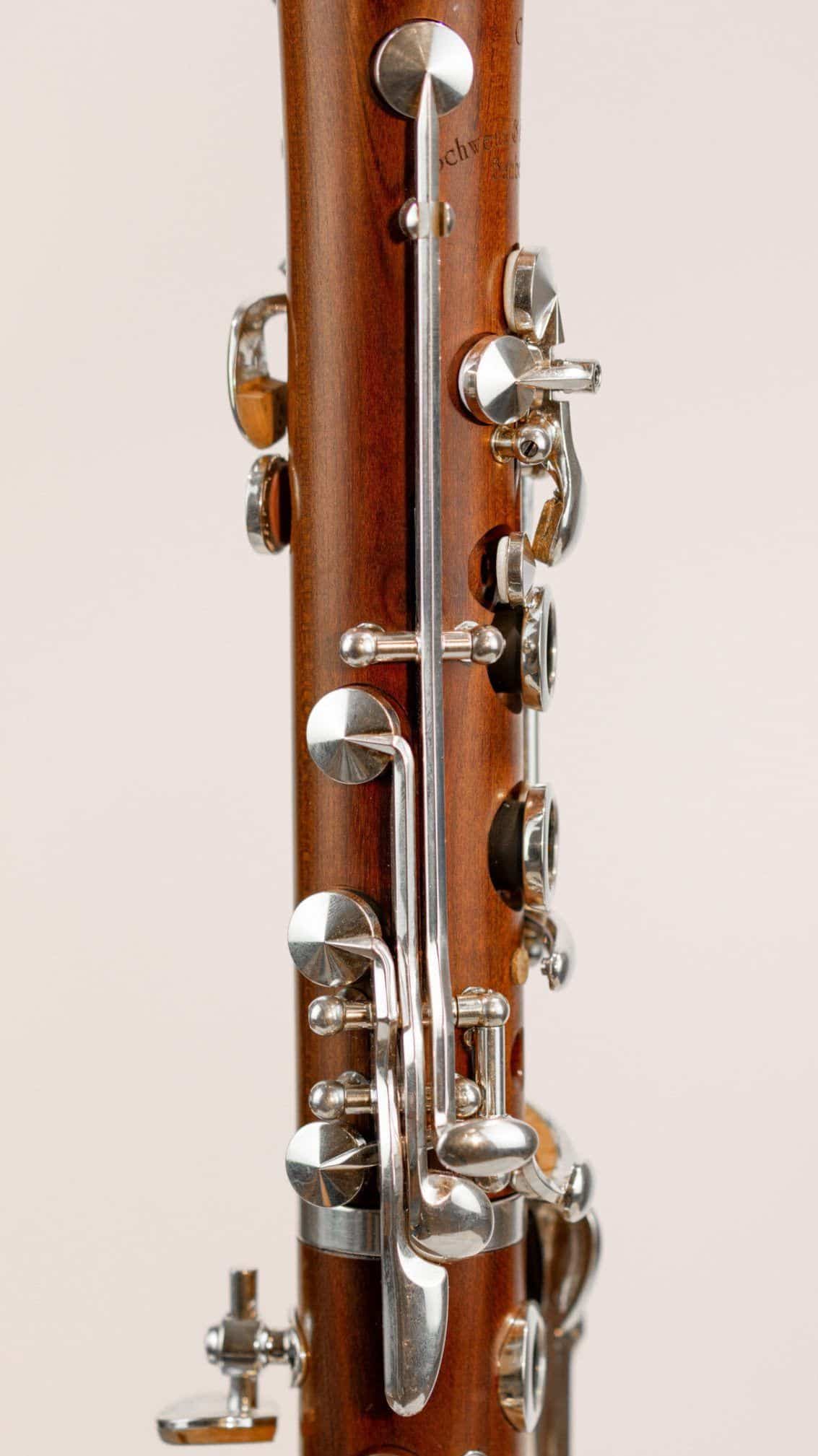
3 trills (similar to illustration)
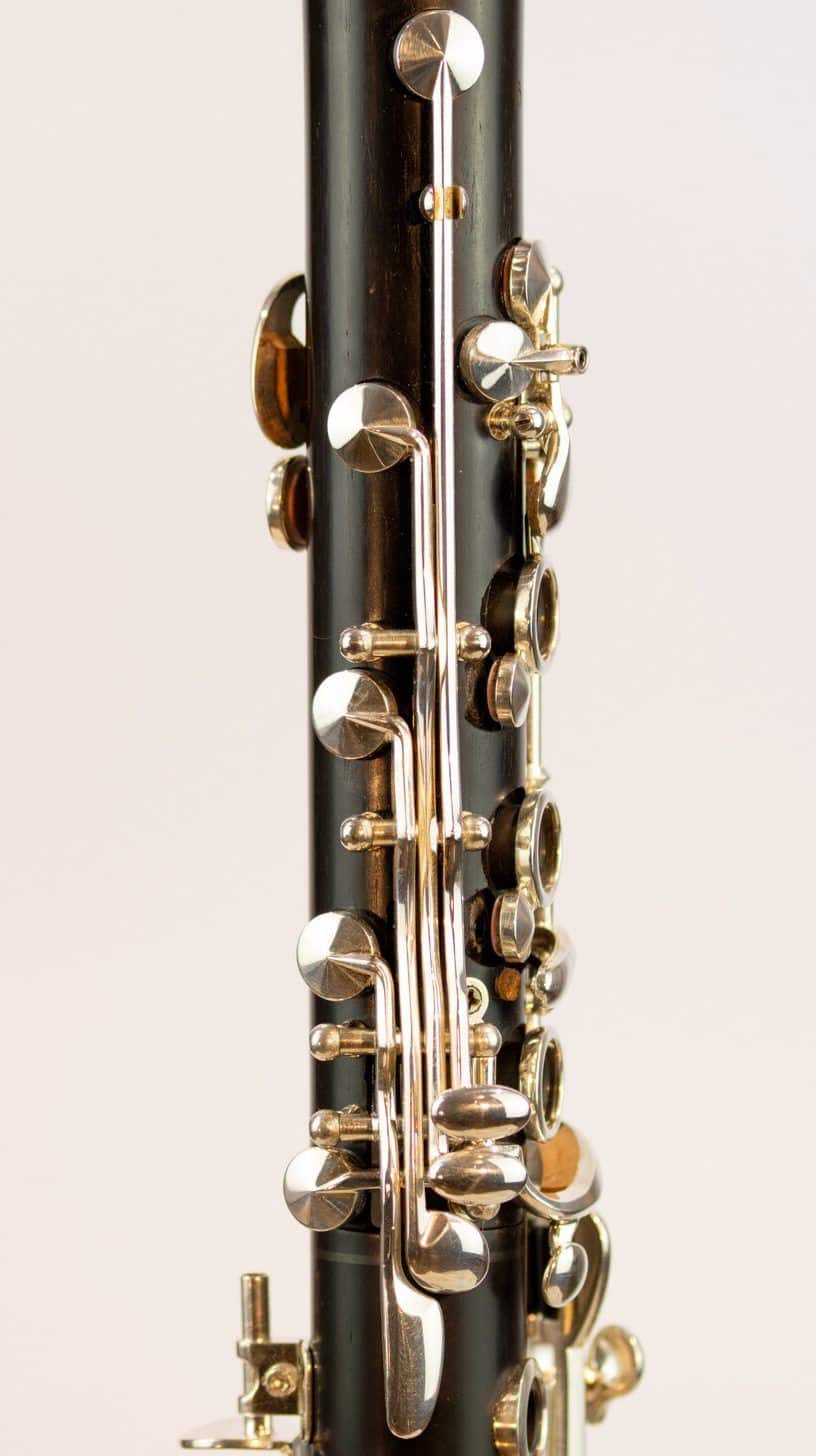
with f/g trill (similar to illustration)
Cross mechanism
The B/f” sharp tone hole moves laterally under the right hand to the side of the body, giving the index finger more space to play comfortably.
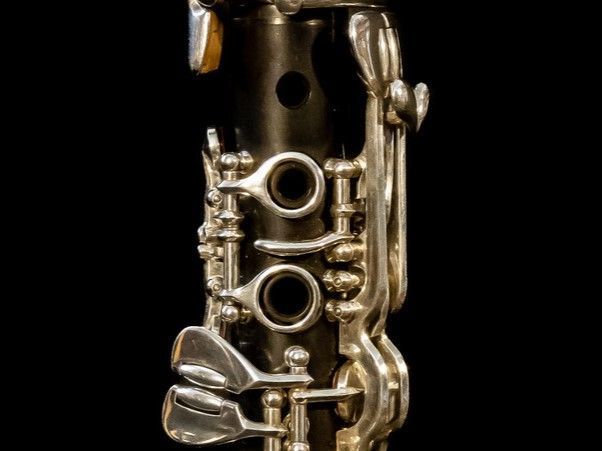
Cross mechanism
f and e flat levers
Both levers for the left little finger, f and e flat, are alternative fingerings for the keys otherwise played with the right hand and date from the time of the Baermann/Ottensteiner clarinet around 1860. For a long time, the e flat lever was used instead of a fork f resonance key in order to be able to intonate the fork f” high enough. Today, the f-lever is preferred in order to be able to avoid slipping the ring finger on the right and to avoid the sound of the fork fingering. Where we can get to know our customers’ hands, these lifters are positioned so that the little finger can make optimum use of them. Find out more on our page on custom-made products.
With us, you have the choice of having both levers fitted to your instrument, just one of them or none at all. On request, we can also build our Model 2000 so that one or both of the levers can be easily retrofitted.

f and e flat levers

only f- or e flat-lever
Bell
Schwenk & Seggelkeclarinets are available without bell mechanism or low E mechanism. The low E mechanism corrects the intonation of the low E through a resonance hole in the bell.
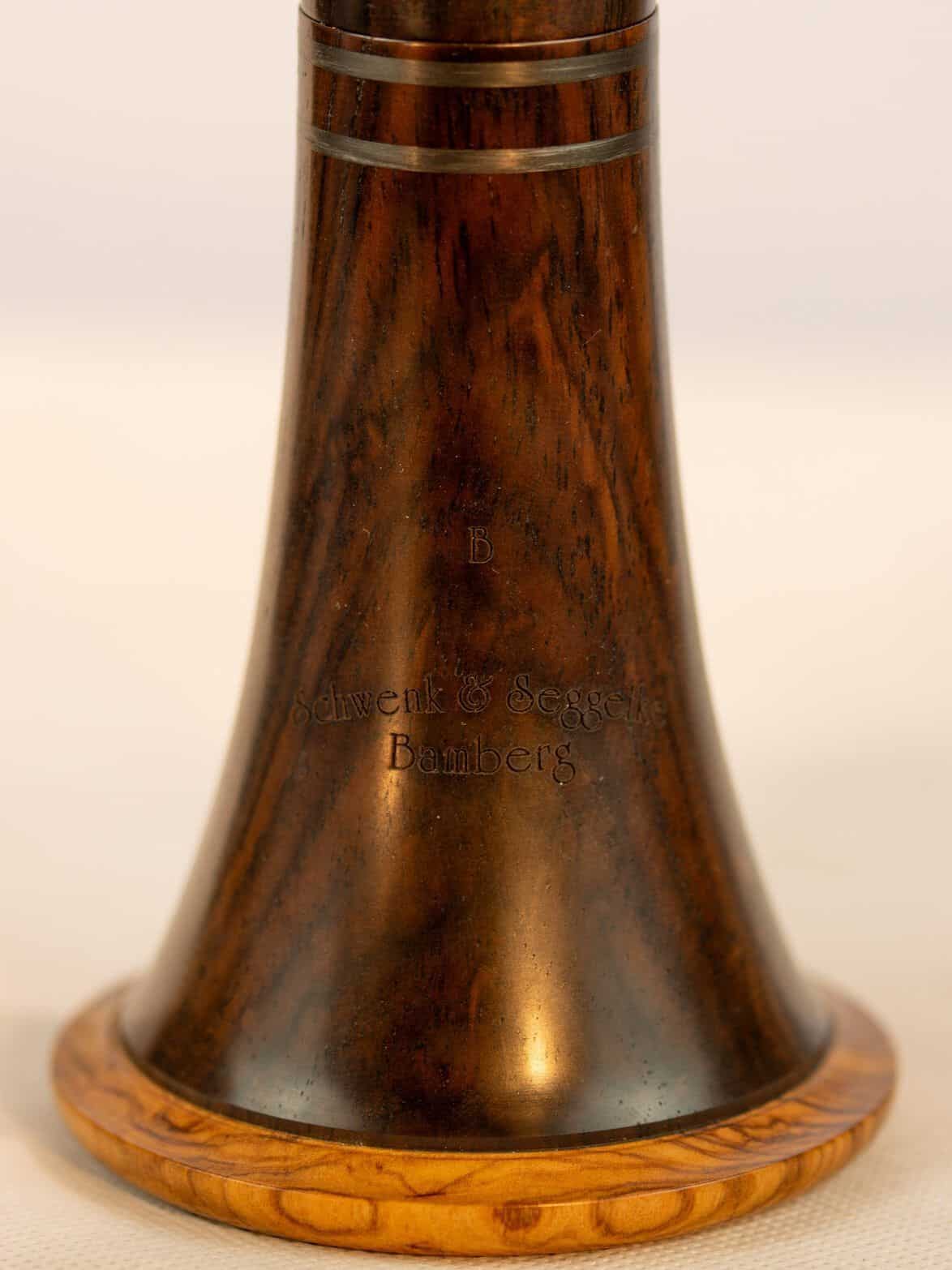
without bell mechanism
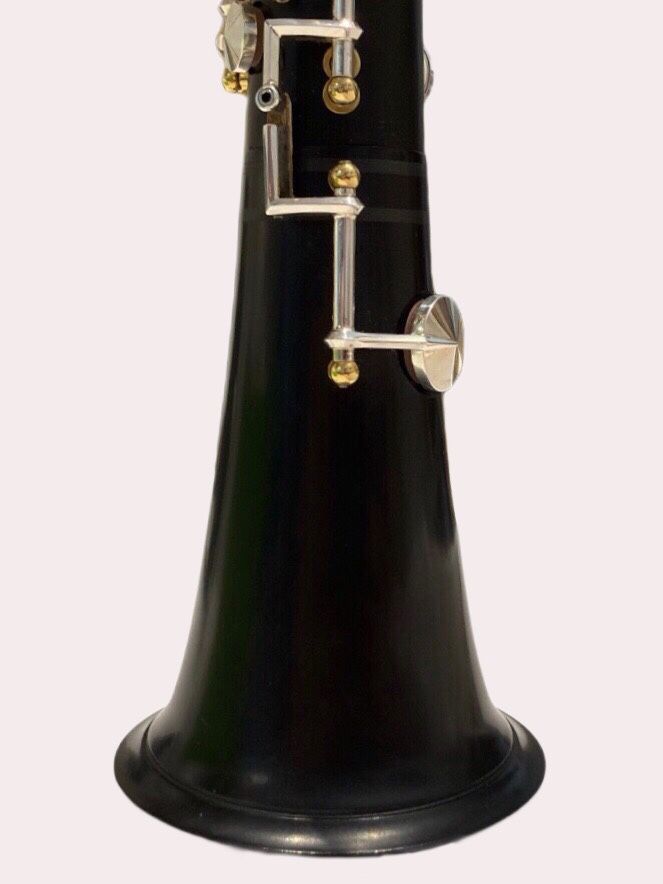
with low-e mechanism

ABOUT CLARINETS WITH
the German fingering system
The German fingering system: A worldwide renaissance
Our instruments with a German fingering system are by no means limited to Germany, but are now being used more frequently all over the world. The origins of this system go back to the tone hole arrangement of historical clarinets and are characterized by a (played) G major scale without fork fingerings. A sound experience that fascinates musicians and listeners alike.
Innovation since the late 19th century
Since the late 19th century, almost all clarinets with the German fingering system have also been equipped with an extended keywork. Most of its semitone holes are open, which allows a chromatic scale to sound evenly. This innovative development enables versatile and precise sound control that will delight musicians.
The right
Mouthpiece DOES IT
Perfection in the art of the clarinet
The mouthpiece plays a decisive role in the blowing resistance and intonation of the instrument. For Schwenk & Seggelke clarinets, we recommend playing our instruments with mouthpieces with the Vandoren or Gleichweit bore that we have modified. We have gone one step further and developed our own mouthpiece model especially for our Eb clarinets. These customized mouthpieces bring out the full potential of your clarinet and let your musical interpretation shine.
Why a unique specimen?
Why Schwenk & SEGGELKE?
Each Schwenk & Seggelke clarinet is unique and represents the time and experience, craftsmanship and love of music that we put into our instruments. Discover how hundreds of separate parts are turned into innovative art and incomparable sound.
MANY YEARS OF EXPERIENCE
HANDMADE BY SOUND MASTERS
FASCINATING
SOUND EXPERIENCE
INDIVIDUALLY
TAILORED







